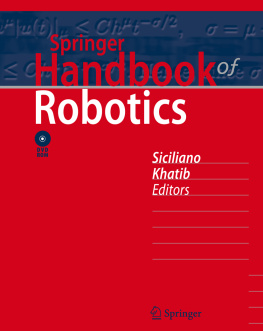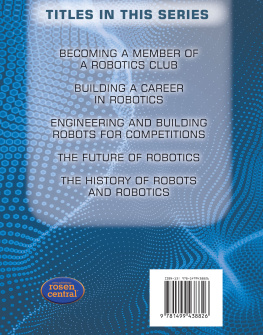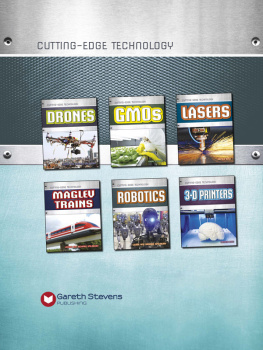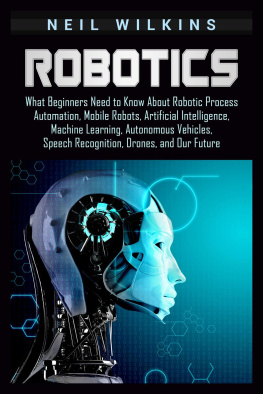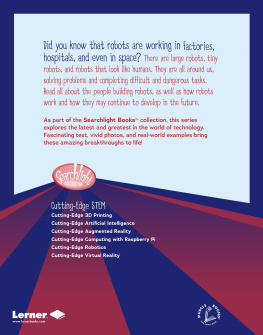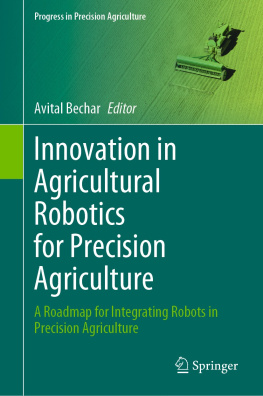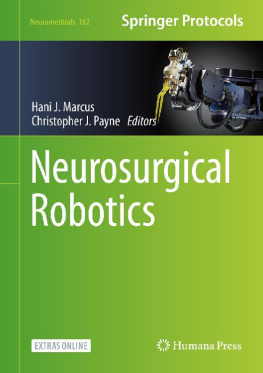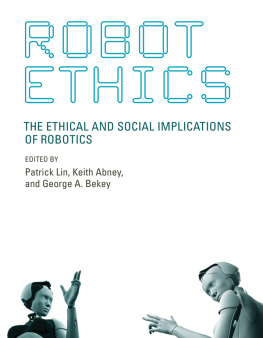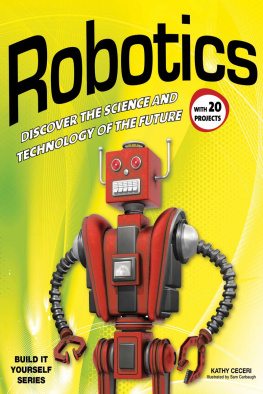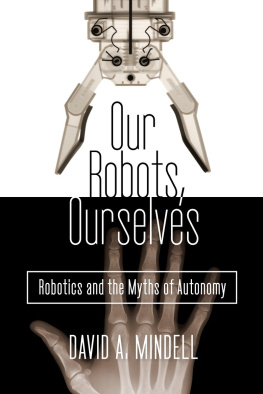Bruno Siciliano and Oussama Khatib (eds.) Springer Handbook of Robotics 10.1007/978-3-540-30301-5_1 Springer-Verlag 2008
1. Introduction
Robots! Robots on Mars and in oceans, in hospitals and homes, in factories and schools; robots fighting fires, making goods and products, saving time and lives... Robots today are making a considerable impact on many aspects of modern life, from industrial manufacturing to healthcare, transportation, and exploration of the deep space and sea. Tomorrow, robots will be as pervasive and personal as todays personal computers. The dream to create machines that are skilled and intelligent has been part of humanity from the beginning of time. This dream is now becoming part of our worlds striking reality.
Since the early civilizations, one of mans greatest ambitions has been to create artifacts in their image. The legend of the Titan Prometheus, who molded humankind from clay, or that of the giant Talus, the bronze slave forged by Hephaestus (3500 BC), testify to this quest in Greek mythology. The Egyptians oracle statues hiding priests inside (2500 BC) were perhaps the precursor of our modern thinking machines. The clepsydra water clock introduced by the Babylonians (1400 BC) was one of the first automated mechanical artifacts. In the following centuries, human creativity has given rise to a host of devices such as the automaton theatre of Hero of Alexandria (100 AD), the hydro-powered water-raising and humanoid machines of Al-Jazari (1200), and Leonardo da Vincis numerous ingenious designs (1500). The development of automata continued to flourish in the eighteen century both in Europe and Asia, with creations such as Jacquet-Drozs family of androids (drawer, musician and writer) and the karakuri-ningyo mechanical dolls (tea server and archer).
The robot concept was clearly established by those many creative historical realizations. Nonetheless, the emergence of the physical robot had to await the advent of its underlying technologies during the course of the twentieth century. In 1920, the term robot derived from robota which means subordinate labour in Slav languages was first introduced by the Czech playwright Karel apek in his play Rossums Universal Robots (R.U.R.). In 1940, the ethics of the interaction between robots and humans was envisioned to be governed by the well-known three fundamental laws of Isaac Asimov, the Russian science-fiction writer in his novel Runaround.
The middle of the twentieth century brought the first explorations of the connection between human intelligence and machines, marking the beginning of an era of fertile research in the field of artificial intelligence (AI). Around that time, the first robots were realized. They benefited from advances in the different technologies of mechanics, controls, computers and electronics. As always, new designs motivate new research and discoveries, which, in turn, lead to enhanced solutions and thus to novel concepts. This virtuous circle over time produced that knowledge and understanding which gave birth to the field of robotics , properly referred to as: the science and technology of robots.
The early robots built in the 1960s stemmed from the confluence of two technologies: numerical control machines for precise manufacturing, and teleoperators for remote radioactive material handling. These master-slave arms were designed to duplicate one-to-one the mechanics of the human arm, and had rudimental control and little perception about the environment. Then, during the mid-to-late twentieth century, the development of integrated circuits, digital computers and miniaturized components enabled computer-controlled robots to be designed and programmed. These robots, termed industrial robots, became essential components in the automation of flexible manufacturing systems in the late 1970s. Further to their wide application in the automotive industry, industrial robots were successfully employed in general industry, such as the metal products, the chemical, the electronics and the food industries. More recently, robots have found new applications outside the factories, in areas such as cleaning, search and rescue, underwater, space, and medical applications.
In the 1980s robotics was defined as the science which studies the intelligent connection between perception and action . With reference to this definition, the action of a robotic system is entrusted to a locomotion apparatus to move in the environment (wheels, crawlers, legs, propellers) and/or to a manipulation apparatus to operate on objects present in the environment (arms, end effectors, artificial hands), where suitable actuators animate the mechanical components of the robot. The perception is extracted from the sensors providing information on state of the robot (position and speed) and its surrounding environment (force and tactile, range and vision). The intelligent connection is entrusted to a programming, planning and control architecture which relies on the perception and available models of the robot and environment and exploits learning and skill acquisition.
In the 1990s research was boosted by the need to resort to robots to address human safety in hazardous environments ( field robotics ), or to enhance the human operator ability and reduce his/her fatigue ( human augmentation ), or else by the desire to develop products with wide potential markets aimed at improving the quality of life ( service robotics ). A common denominator of such application scenarios was the need to operate in a scarcely structured environment which ultimately requires increased abilities and a higher degree of autonomy .
By the dawn of the new millennium, robotics has undergone a major transformation in scope and dimensions. This expansion has been brought about by the maturity of the field and the advances in its related technologies. From a largely dominant industrial focus, robotics has been rapidly expanding into the challenges of the human world ( human-centered and life-like robotics ). The new generation of robots is expected to safely and dependably co-habitat with humans in homes, workplaces, and communities, providing support in services, entertainment, education, healthcare, manufacturing, and assistance.
Beyond its impact on physical robots, the body of knowledge robotics has produced is revealing a much wider range of applications reaching across diverse research areas and scientific disciplines, such as: biomechanics, haptics, neurosciences, virtual simulation, animation, surgery, and sensor networks among others. In return, the challenges of the new emerging areas are proving an abundant source of stimulation and insights for the field of robotics. It is indeed at the intersection of disciplines that the most striking advances happen.
Today, new communities of users and developers are forming, with growing connections to the core of robotics research. A strategic goal for the robotics community is one of outreach and scientific cooperation with these communities. Future developments and expected growth of the field will largely depend on the research communitys abilities to achieve this objective.

